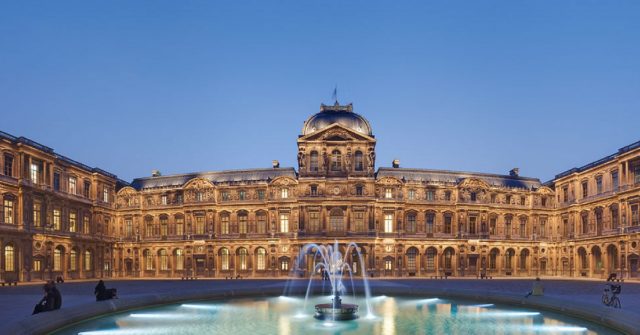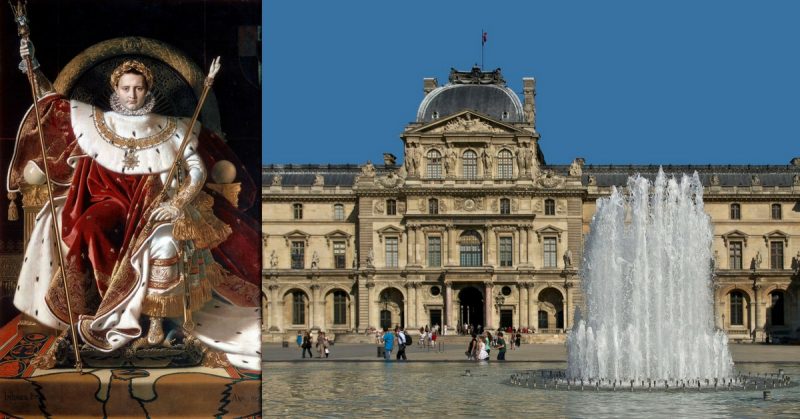Napoleon Bonaparte is one of the most influential figures in European history. Two hundred years after his short-lived Empire collapsed, the world continues to be shaped by his legacy.
The Art of War
Napoleon made significant innovations in warfare. Given his background in artillery, this was inevitably an area where he made a difference. He showed the world how to concentrate firepower and make use of mobile reserve batteries effectively. He promoted a movable type of warfare, with fast marches and decisive maneuvers.
There was also a shift in his approach to war. He encouraged the professionalism of armies born from the French Revolution. He also committed to a more destructive form of war, in which the aim was to destroy rather than merely outmaneuver enemy armies.
Napoleon’s enemies learned from fighting against him, shaping warfare in the decades and centuries that followed.

Legal Reforms
The upheavals of the French revolution had left the French legal system in chaos. Disjointed decrees tore up what had come before without leaving a coherent alternative.
One of Napoleon’s proudest achievements was untangling this mess. He had the laws of post-revolutionary France brought together into a coherent whole. This Civil Code removed the privileges of the aristocracy, ensured property rights, and created greater equality. In doing so, it shifted the focus of the law to benefiting the middle class.
As the French Empire spread across Europe, it brought these legal reforms with it. Many countries retained parts of the Code long after the Empire dissolved.
The Civil Code brought in many liberal reforms. However, it also had retrograde elements, such as making it harder for women to leave abusive marriages.

Spreading the Metric System
Along with the Civil Code, Napoleon brought the metric system to the rest of Europe.
The metric system, one of the great creations of enlightened French thought, was put in place by the revolutionaries. It replaced the traditional system of weights and measures, which included erratic numbering and local variations. Using a base of ten, the metric system was more rational and easier to use. Like the Civil Code, it was popularized by Napoleon’s empire and endures long after his fall.
The Louisiana Purchases
Although he never fought in the Americas, Napoleon had an impact on that continent.
The sale of Louisiana to the United States of America for 80,000,000 francs was hardly a good deal for France financially. Strategically, though, it was advantageous in providing a cash boost and allowing Napoleon to focus on Europe while avoiding colonial warfare.
By adding vastly to the size of the US, the purchase ensured the growing supremacy of that fledgling nation in North America. Louisiana is part of the USA thanks to Napoleon.

The Louvre
As a building, the Louvre dated back to the French monarchy of 1793. As a museum, it had its origins in the revolution, when it undertook to educate the French and show off their national treasures. Napoleon made it an institution of truly global significance.
In 1802, he appointed Vivant Denon as the first director of a great scheme to turn the Louvre into an imperial art gallery. Pillaging artifacts from public and private collections across Europe, Napoleon brought them back to Paris. In the Louvre, they were displayed alongside art commissioned to celebrate his greatness. One of the world’s greatest art collections was born from Napoleon’s Empire.
The End of the Holy Roman Empire
In 1806, Napoleon’s conquests and treaties led to the end of one of Europe’s most enduring and complex institutions – the Holy Roman Empire.
It is said of the Holy Roman Empire that it was neither holy, Roman, nor an empire. It was an organization of various central European kingdoms, duchies, and other political units, many of them Germanic. It’s slow evolution saw it grow from a medieval confederation to a tool of Austrian political will. Although the Austrian Habsburgs would continue to hold sway over a large empire, the destruction of the Holy Roman Empire cut their influence in Germany and paved the way for other institutions.
German Nationalism
The vacuum created by the fall of the Holy Roman Empire was filled with German nationalism and eventually lead to the German nation. While Germany would not formally unite until 1871, the seeds of that event lay in Napoleon’s Empire.
French occupation caused resentment in many of the German states, as French laws and officials rode roughshod over local interests. This resentment led to a sense of nationalism as people united in the face of foreign intervention.
King Frederick William of Prussia proved particularly smart at using the language of nationalism. He brought Germans together against France from 1813 in the Wars of Liberation. This fostered a desire for a German nation and put Prussia in the perfect place to lead it. Decades later, the Prussians would build on this to sideline Austria and unite Germany under them.
Freedom in Latin America
The French invasion of Spain eventually led to revolutions on the far side of the world, in the Spanish colonies of Latin America. Those colonies were never occupied by the French. There were disagreements over what their status was in relation to the Spanish government, both during its exile and on its return to Spain. Latin American colonists came to enjoy local control and resent the way the far off Spanish government treated them, leading to the revolutions that made them independent.
Religion in France
In France, Napoleon played a vital part in the current religious sentiment. Most French citizens were Catholic, but resentment against the church and its clergy had given the revolution an anti-religious tone. Huge tensions existed between those wanting to preserve a Catholic culture and those encouraging a secular state.
Ambivalent about faith, Napoleon took a pragmatic approach to this. He fostered friendly relations with the church and used the symbols of religion in his coronation. However, he kept the church at arms-length from the state, bereft of its former power.
This compromise proved stable and is reflected in modern France – a nation of Catholics with strictly secular state laws and government.
Sources:
Mike Duncan, Revolutions Podcast.
Alan Forrest (2011), Napoleon.
Robert Harvey (2006), The War of Wars: The Epic Struggle Between Britain and France: 1789-1815.
